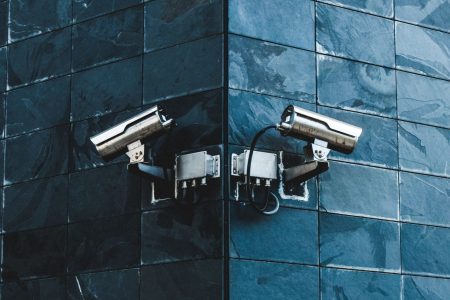Intelligent video surveillance connected systems have become part of the norm, so how can deep learning benefit security systems? IDIS recently launched the latest tech-explainer eBook – The Benefits of Deep Learning Driven Intelligent Video Analytics. The eBook explores how a new generation of AI video solutions is delivering better security, safety, operational efficiency and business intelligence. The eBook, which can be downloaded now from the IDIS website, reflects the company’s commitment to supporting its systems integrator partners as they focus on delivering advanced video solutions into growth sectors.
In recent years, the terms ‘intelligent’ and ‘artificial intelligence (AI)’ have been applied to many different types of security systems, but without agreement on what AI means, says IDIS, so it’s important to understand that not all solutions are designed to the same standard or deliver equal value. This is despite the fact that 71% of security professionals report that AI video analytics already provides value to their operations or that they expect it to in the future, according to the IFSEC Global Video Surveillance Report 2020, which analysed feedback from over 700 security respondents globally.
The new eBook explains some of the differences between conventional Binary Large OBject ‘BLOB’ analytics (found in most modern network cameras and relatively prone to false-alarm triggers caused by environmental factors) and more powerful deep learning technologies.
But video analytics capability has moved considerably beyond this. Today security departments can take advantage of deep learning that leverages neural networks made up of multiple layers of algorithms and advanced processing. This is now driving what is widely accepted to mean true intelligent video analytics.
Deep learning engines are ‘trained’ using vast datasets of images and video footage of people, objects, and vehicles. They can ‘look for’ size, shape, speed, and directional information, and they continue to learn while in use. To an extent, deep learning replicates the way neurons work in the brain: it can analyse and prioritise input from video data to` decide which inputs are of value, and it will notify security operatives accordingly. These newest generation AI solutions leverage neural networks made up of multiple layers of algorithms and advanced processing, and can be more accurately called ‘intelligent’ video analytics.
Deep learning’s real value comes from its ability to detect events of interest and distinguish these from video data input which is just ‘noise’. But some caution is still needed, warns IDIS: deep learning video solutions can still disappoint if the engines and algorithms that drive them are not fully trained and able to recognise objects reliably and accurately.
By contrast, effective deep learning video analytics can deliver multiple benefits, from preventing ‘alarm overload’ in busy security control rooms, to freeing up personnel resources and enabling security provision to be better focused. Metadata search functions also allow users to benefit from advanced interrogation of single and multiple cameras, speeding up investigations and automatically locating objects or people of interest.
The eBook also outlines how AI video can support efficient return-to-work strategies and ensure COVID-secure facilities and workplaces using highly accurate analytics for face mask detection, social distancing adherence, people counting, and occupancy monitoring. Guidance is also provided for systems integrators, demonstrating how the same functionality will deliver value beyond the pandemic, with benefits such as facilities and workspace optimisation, and actionable insights particularly for the retail and hospitality sectors.
“The best AI offerings today add value for customers by providing useful business intelligence and rapidly increasing productivity and efficiency,” says Andrew Myung, President, IDIS America. “This new eBook explains how systems integrators can get past the jargon to support end-users, building a compelling business case that addresses both immediate priorities and demonstrates long-term return on investment.”
False alarms
The first section of the report details how to overcome challenges from false alarms. The 2020 IFSEC Global Video Surveillance report cited reducing false alarms as the #1 reason for adopting AI – and for good reason.
Traditional blob type analytics cameras are prone to being triggered by environmental factors, such as heavy rain, snow, or moving foliage, and struggle to distinguish a human presence, which may present a threat, from harmless animal activity. For users, this can result in time being wasted investigating the cause of alarms, and the larger the site, or more overstretched the system operator, the worse that problem can be.
‘Alarm overload’ is a common problem. Operators can quickly become desensitised by false alarms and can start missing genuine threats, or even be tempted to shut off the system. Alarm receiving centers and virtual guarding firms typically increase charges for more frequent call outs and they may even withdraw monitoring services from problematic sites until cameras are re-configured or replaced.
This can result in organisations needing to draft in additional security officers, to maintain protection, or risk leaving gaps in security. Over time, many organisations find it infeasible to maintain systems that are prone to false alarms. The solution? By moving to deep learning-based analytics, customers can attain improved situational awareness, with highly accurate AI-assisted notifications for intrusion, object, loitering, and unusual event detection. Security operators will be better able to manage everyday events, and respond to more serious threats and emergencies. In short, safety and security are enhanced by better detection and verification.
Unlike human brains, deep learning engines don’t get tired. They can constantly monitor multiple camera streams in search of suspicious behavior, maintaining performance levels even in the busiest scenes such as retail malls, logistics centers, higher education settings, and outdoor spaces. Relying on human operators to monitor multiple cameras means hiring enough staff to cope and allowing for regular breaks to ensure they stay alert.
Using AI-assisted notifications free-up operators from having to constantly monitor multiple camera streams and video walls. Instead, they can respond quickly and flexibly, and not just from the control room. They can configure alarms to be received to client software, and on mobile devices such as smartphones and tablets, giving the ability to verify and respond to events on the move.
The future
The eBook ends by expressing how the industry can adapt to future challenges and overcome current challenges.
If COVID-19 has taught us anything it is that businesses need to be able to pivot and adapt quickly. Flexible and scalable AI solutions will be a popular choice, offering backward and forward compatibility, leveraging existing investments in cameras that can be used for security and safety as well as business intelligence purposes, as well as integrating with third party systems, platforms, and correlating with other data.
End users will be keen to see product roadmaps that will allow them to easily add more AI-assisted analytics as they become available without incurring unpredictable increases in licensing fees. They will be keen to learn of upcoming analytics functions in the pipeline, and new tools that will allow them to combat common challenges such as slips, trips, and falls, which are ever-present workplace risks, especially in sectors such as healthcare, assisted living, retail, and manufacturing.
Looking ahead, it also seems unlikely that there will be a return to former ways of doing things – for organisations or for wider society – because these have been revealed as inherently vulnerable.
So, flexibility and the ability to adapt quickly will become priorities. This makes it vital for systems integrators demonstrating new AI tech to also show the true long-term value of technology that is scalable and flexible. In offering these solutions to customers, systems integrators now have some big opportunities to help them adapt and prosper long term.
You can download the full eBook on the IDIS website to discover the full parameters of deep learning in video surveillance, from mitigating false alarms, using metadata for efficiency, discovering the full ability of business intelligence, workplace optimisation and even Covid-19 solutions.
Commentary: Christian Morin, CIO of Genetec
As an industry, and as manufacturers in physical security, we cannot take these hacks lightly. The potential broad reaching impact of these hacks on physical security systems, including providing a beachhead to facilitate lateral movement onto networks, resulting in data and privacy breaches or access to critical assets and infrastructure, cannot be understated. It is our responsibility and duty to users of our technology to prioritize data privacy and cybersecurity in the development, distribution, and deployment of video surveillance systems.
In our recent survey, the State of Physical Security, we uncovered that only about 30% of security professional respondents were prioritizing cybersecurity initiatives in 2021. I can only hope this most recent incident acts as the wakeup call required to ensure every organization in the chain understands and acts upon the critical importance of privacy and security in the design, development, implementation and operations of physical security systems
Commentary: Uri Guterman, Head of Product & Marketing for Hanwha Techwin Europe
The ability to monitor and manually track moving objects has been possible ever since the introduction of PTZ cameras several decades ago. Using a joystick, mouse or a keyboard, operators have been able to control the cameras’ pan, tilt and zoom functionality to observe close-up detail of any activity.
A pre-set ‘tours’ feature has added to the value of PTZ cameras, as it meant they could be programmed to scan around a field of view and to some extent, this has minimised the amount of time an operator had to concentrate on monitoring a site.
A significant improvement in how large open areas could be efficiently monitored was achieved in 2008 when Hanwha Techwin was among the first manufacturers to introduce a PTZ dome camera with auto-tracking functionality, which could be manually activated by operators, as well as triggered by video analytics or by alarm events.
However, a recent giant leap in technology has taken the effectiveness and efficiency of auto-tracking to a new level. When triggered by an alarm event, the latest generation of video surveillance cameras equipped with highly accurate Deep Learning AI based video analytics, lock onto people or vehicles potentially involved in criminal activity as they move around a camera’s field of view. No operator involvement is needed as the analytics enable a camera to operate completely autonomously, although an operator can manually take control at any time.
AI based auto-tracking offers a very high level of accuracy because it is not distracted by video noise, waving trees, moving clouds or animals. In simple terms, it ignores these common causes of false alarms because it is only looking for people or vehicles. This makes it an extremely powerful hands-free tool to help operators monitor activity occurring in open environments such as airports, car parks, industrial estates, stadia and city centres.
Commentary: Frank Crouwel, Managing Director of NW Security
Many IT managers are being forced to take a deeper interest in their organisations’ CCTV systems, now that the technology and security installer partner capability is available to upgrade and improve CCTV systems – potentially moving them up into the cloud and exploring AI-driven video analytics capabilities which will come as standard in the next generation of CCTV systems.
We are seeing more businesses looking for help from expert partners for improvement and optimisation of CCTV systems to ensure they are getting optimal value from their existing systems. Surprisingly today, only 10% of systems are supported by an external CCTV/network video specialist installer, NW Security’s study found. Yet with so much new technology coming in so quickly; and the pressure to migrate video monitoring into the cloud growing, deeper partnerships with external experts with combined pools of IT networking, cloud migration and professional security expertise are likely to gain ground. NW Security believes that the CCTV market is undergoing a fundamental change and we plan to investigate the implications of that change in a second study later this year.













